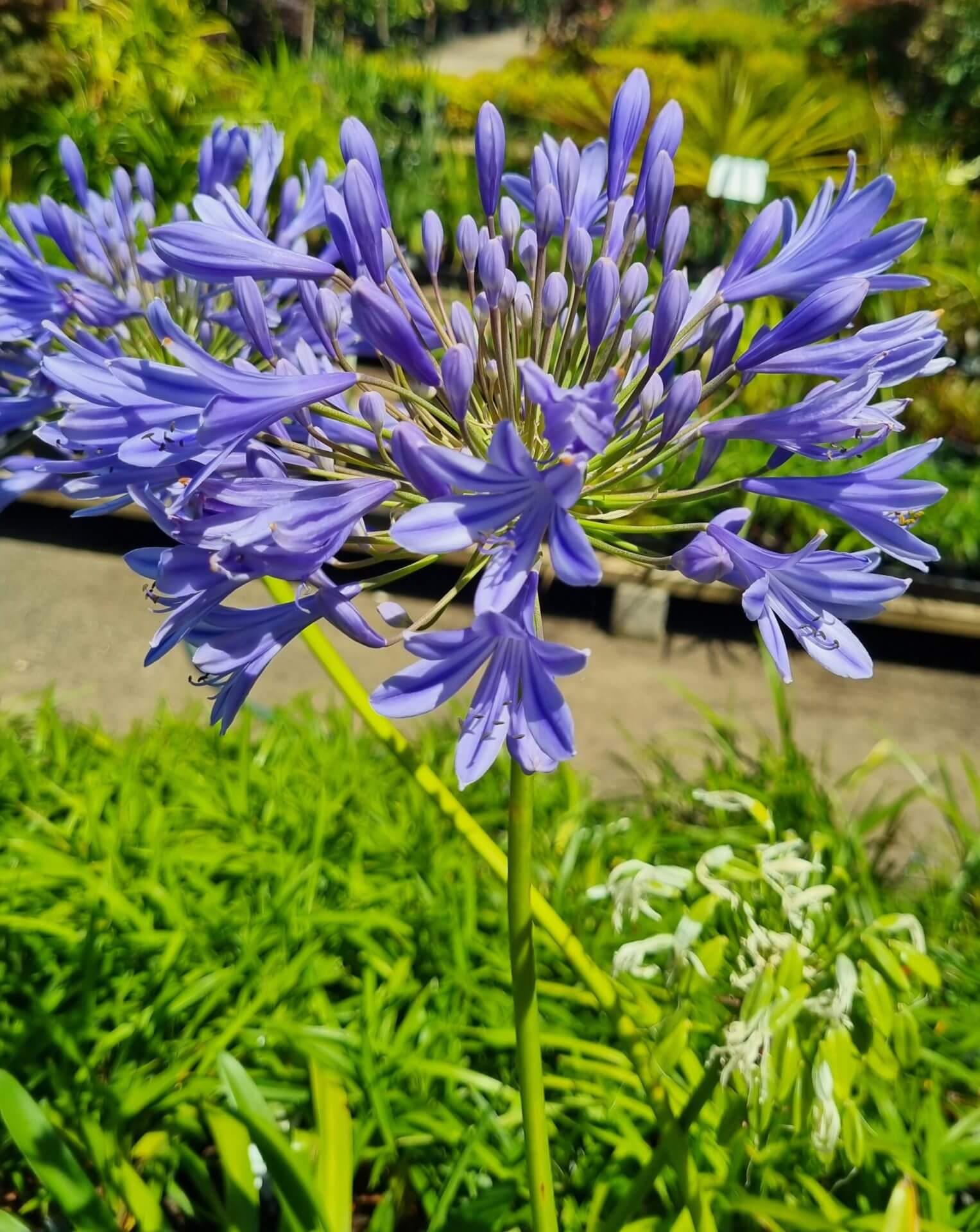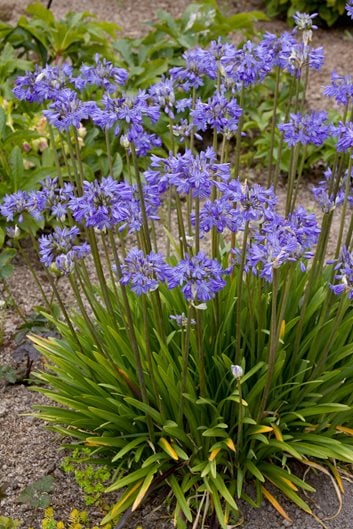Unleashing the Secret to Effective Agapanthus Farming: Tips and Techniques for a Flourishing Garden
In the realm of gardening, cultivating agapanthus effectively needs a strategic technique that includes different aspects of plant treatment. With mindful interest to detail, one can open the tricks to nurturing these spectacular blossoms, bring about a garden that prospers with elegance and vibrancy. By recognizing the nuances of agapanthus cultivation, one can create an atmosphere where these plants thrive and flower perfectly. In the complying with discussion, we will certainly discover vital tips and methods that will assist you in the direction of a prospering agapanthus garden, using insights right into ideal techniques, soil problems, sprinkling strategies, and much more.
Growing Agapanthus: Finest Practices
When growing Agapanthus, proper dirt prep work is essential for ensuring effective development and advancement of these beautiful blossoms. Agapanthus, frequently referred to as Lily of the Nile or African lily, flourishes in well-draining dirt with a somewhat acidic to neutral pH level - Agapanthus. Before planting, it is crucial to amend heavy clay soils with organic matter such as garden compost or peat moss to improve water drainage and supply crucial nutrients for the plants
To grow Agapanthus, select a location that obtains complete sunlight to partial shade, as this will certainly promote healthy and balanced growth and abundant flowering. Dig a hole two times the diameter of the plant's root sphere and put the Agapanthus at the exact same deepness it was previously growing. Delicately backfill the hole with soil, weighing down strongly to get rid of any air pockets around the origins.
Water the freshly grown Agapanthus completely and remain to keep the dirt uniformly moist, especially during the plant's energetic expanding period. Agapanthus. Using a well balanced plant food once a month can further support the plant's development and blooming. By following these ideal practices for growing Agapanthus, you can create a magnificent screen of these captivating blossoms in your garden
Perfect Soil Issues for Agapanthus
For optimal growth and flowering success of Agapanthus plants, guaranteeing the soil problems are ideal is crucial. Agapanthus favors dirt that is abundant in nutrients, so incorporating a well balanced fertilizer throughout the expanding period can advertise healthy and balanced development and vibrant blossoms.

Watering and Feeding Tips
To ensure healthy development and vibrant flowers, appropriate watering and fertilizing techniques are vital for successful Agapanthus growing. Agapanthus plants gain from routine watering, particularly during the expanding period. It is advised to water deeply as soon as a week, making certain the dirt is wet but not waterlogged. During hot weather condition or in pots, more regular watering may be required to avoid the soil from drying out completely.
When it involves feeding Agapanthus, a balanced fertilizer with equivalent components nitrogen, phosphorus, and potassium can be applied in the springtime to advertise healthy development and flowering. Slow-release plant foods are excellent for giving nutrients gradually over an extensive duration. Stay clear of over-fertilizing, as this can bring about extreme foliage development at the cost of blooms.
In addition, integrating organic issue like compost right into the dirt can enhance nutrient degrees and enhance dirt structure, aiding in the total health and wellness of the Agapanthus plants. By following these watering and feeding ideas, garden enthusiasts can ensure their Agapanthus plants flourish and create stunning displays of blossoms.
Pruning and Deadheading Methods
Proper trimming and deadheading methods play an essential duty in keeping the health and aesthetic appeals of Agapanthus plants, enhancing the necessary practices of watering and fertilizing for successful cultivation. Pruning Agapanthus entails removing invested blossom heads, yellowing or dead leaves, and general shaping of the plant to promote much better growth. Deadheading, the procedure of removing faded blossoms, not just enhances the plant's look but additionally encourages additional growing.
When deadheading Agapanthus, it is advisable to clip off the blossom stem at the base using sharp, clean shears. This process reroutes the plant's power from seed production back into root and foliage development, More Info advertising a visit this site much healthier and much more durable plant. Normal deadheading can extend the blooming period of Agapanthus and prevent self-seeding, which can cause congestion.
In terms of pruning, Agapanthus normally gain from a light trim after flowering to clean the plant and motivate fresh growth. Cutting back the spent flower stems and removing any dead or damaged foliage aids keep the plant's vitality and total look. Nonetheless, it is vital to avoid reducing into the crown of the plant, as this can compromise its health.

Protecting Agapanthus From Pests and Diseases
Executing reliable parasite and illness administration techniques is essential to protecting the health and vigor of Agapanthus plants in growing. Agapanthus are normally sturdy plants, however they can still fall target to different insects and diseases otherwise correctly looked after. One typical insect that influences Agapanthus is the Agapanthus borer, a caterpillar that passages into the plant, creating damage to the leaves and flowers. To avoid problems, routine examination of the plants is important. If borers are identified, they can be by hand eliminated, or insecticidal soap can be made use of as a control procedure.
In enhancement to parasites, Agapanthus are at risk to diseases such as origin rot and fungal fallen leave places. By remaining attentive and resolving insect and disease issues promptly, gardeners can help their Agapanthus thrive and flourish.

Conclusion
In verdict, successful growing of agapanthus calls for appropriate growing techniques, suitable dirt problems, adequate watering and fertilizing, routine pruning and deadheading, and defense from insects and illness. By complying with these ideas and tricks, garden enthusiasts can guarantee a prospering garden filled up with stunning agapanthus flowers. Agapanthus. Remember to preserve constant treatment and focus to information to advertise the wellness and longevity of these spectacular plants
When growing Agapanthus, proper soil prep work is necessary for guaranteeing effective growth and growth of these attractive flowers.Water the freshly grown Agapanthus completely find out and proceed to maintain the dirt equally wet, particularly during the plant's active expanding period.For optimal growth and blooming success of Agapanthus plants, guaranteeing the soil problems are ideal is crucial. When planting or transplanting Agapanthus, make certain the soil is well-prepared to offer the required foundation for the plants to develop themselves effectively. One typical insect that affects Agapanthus is the Agapanthus borer, a caterpillar that tunnels right into the plant, creating damages to the leaves and flowers.
Comments on “Agapanthus Varieties: Choosing the Best for Your Landscape”